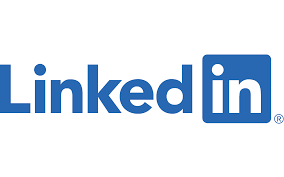When we were first asked to assess Bright Side Studios’ performance on LinkedIn and Instagram, I was honestly confused. As someone who typically turns to platforms like Instagram or Xiaohongshu for visual inspiration, I didn’t see how LinkedIn — a platform I’ve always associated with job applications — would be useful for a creative studio.
To me, LinkedIn felt formal and rigid, focused on job titles and career milestones. It seemed far removed from creativity, emotion, or immersive storytelling — all the things Bright Side excels at.
But this project challenged that assumption.
LinkedIn as a Trust-Building Tool for Creative Companies
Through our audit of Bright Side’s digital brand, I came to an important realization: LinkedIn isn’t about reaching the general public — it’s about reaching institutions and potential collaborators.
Bright Side doesn’t just produce visually impressive work. Their clients include distilleries, museums, cultural venues, and educational institutions — stakeholders who are looking for more than just aesthetics. They want to know:
- Who’s behind the work?
- What have they delivered before?
- Have they been featured or recognised in the media or industry circles?
- Can they be trusted as professional partners?
These are not the kinds of questions that Instagram answers well. They belong on LinkedIn.
Professional Storytelling and Strategic Communication
As a team, we suggested that Bright Side use LinkedIn not to chase engagement metrics, but to build long-term credibility. This could include:
- Behind-the-scenes content showing how installations are set up
- Project breakdowns, including timelines, collaborators, and outcomes
- Case studies featuring institutional partnerships
- Awards, media coverage, or speaking events as third-party validation
It’s not about going viral — it’s about being visible to the right people and earning their trust.
Connecting Back to Course Learning: Choosing Platforms Strategically
In KIPP, we often talk about working backwards from the message and the audience, rather than starting with the platform itself. That principle really resonated with me during this project.
My hesitation toward LinkedIn came from seeing it too narrowly — as a space only for job seekers. But when I re-framed it as a platform for professional storytelling and reputation-building, its value became clear.
A platform’s role isn’t fixed — it depends on how we use it, and who we’re trying to reach.
Final Reflection: From User to Strategist
Before this project, I never gave LinkedIn much thought. I didn’t think it had anything to do with the creative industries.
Now, I see that LinkedIn is where creative companies speak the language of professionalism, and where they build credibility that platforms like Instagram alone can’t deliver.
More importantly, I’ve shifted from viewing platforms as a passive user — to approaching them as a strategic thinker.
That shift in mindset may be the most valuable lesson I’ve taken from this experience.



Leave a Reply